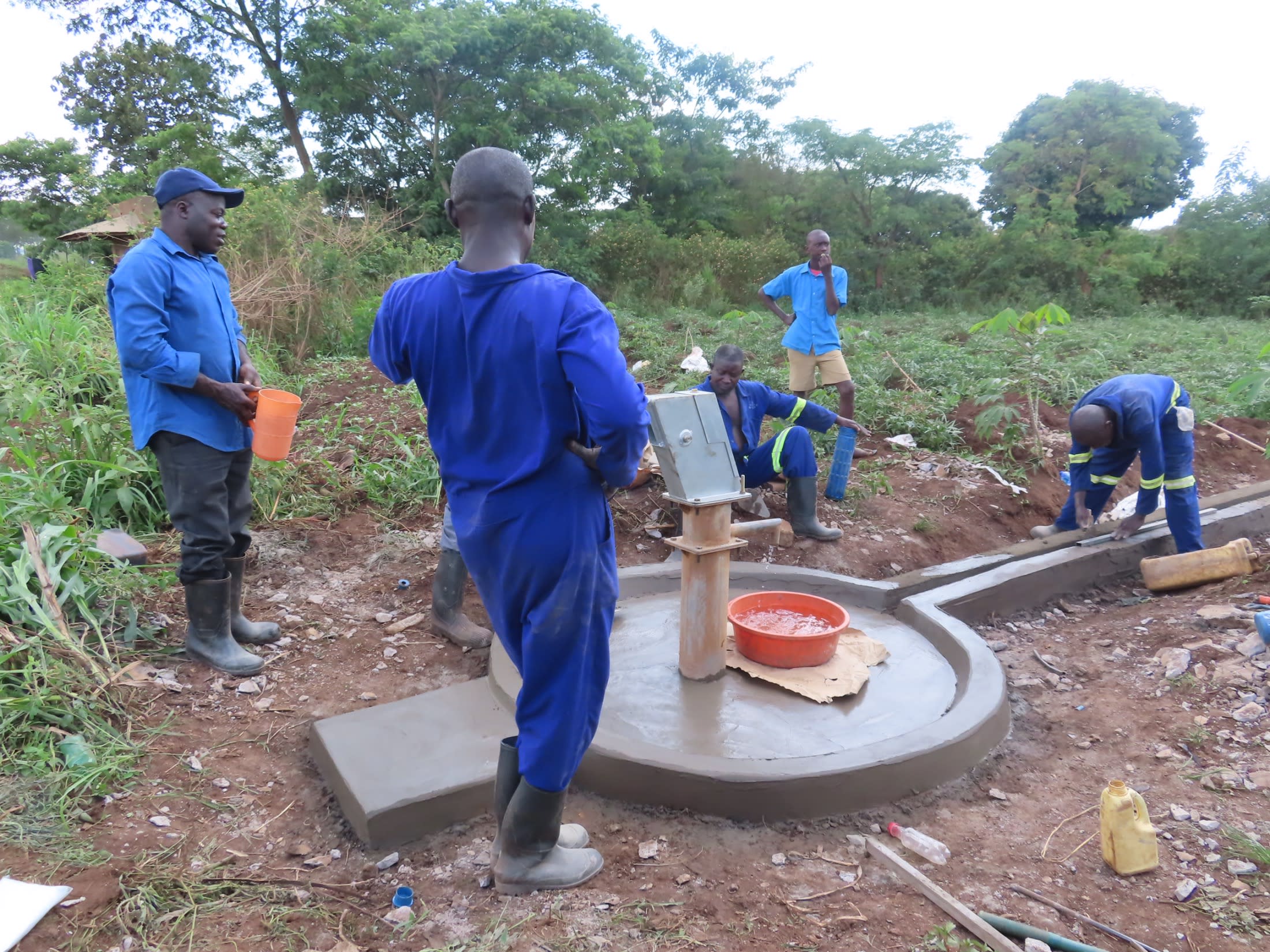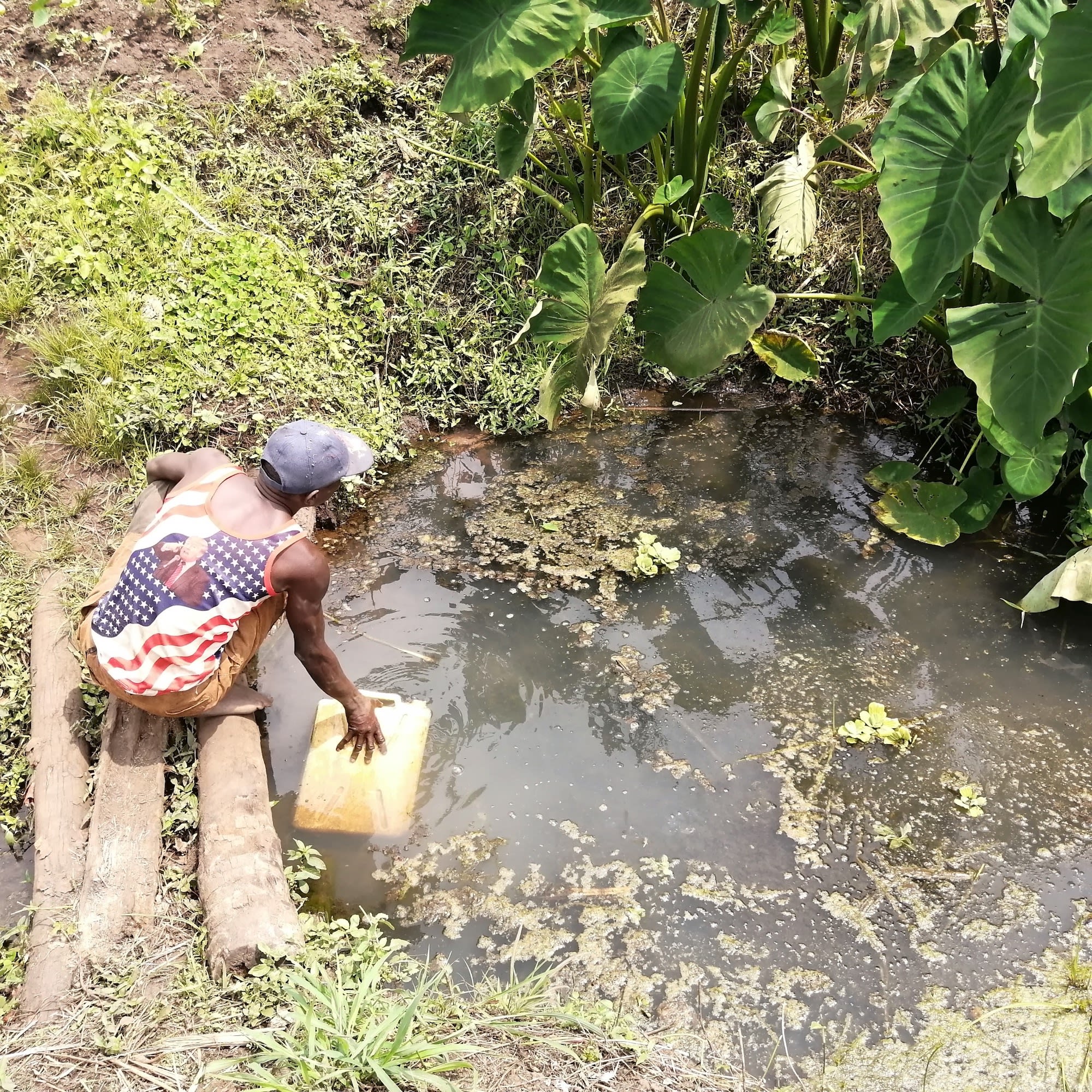Bulima-Kahembe Community lacks a safe, reliable, and easy-to-access water point.
"The current water situation in this area has led to several delays in executing most of our activities due to the long distance we have to move to collect water," explained Pastor Jotham Byonabye.
There are three boreholes and two shallow wells in the community. But two of the borehole wells do not work. The only working borehole is at the school and is restricted from community access. That means that the 350 people living here must travel to the shallow wells located at the community's extreme ends.
As a result, many people opt to buy water rather than travel to fetch water from one of the shallow wells.
"Most times, we spend a lot of money buying water from the vendors, which are very expensive considering the low-income level of the majority of members in this village," Pastor Jotham said.
Those who cannot afford it make the daily trip to the overcrowded wells each day.
We spoke to Yosam Kato about how the lack of an accessible water point impacts the community. He said people wake up by 6:00 each morning and travel one to two miles searching for clean drinking water.
"This interferes a lot with most of our daily activities, like farming, since most times we go to the gardens very late," he said.
Promise, a young girl in the community, has to make the long trek to get water each day because her family cannot afford to buy water. She walks more than a mile each day to get water, passing by the broken-down boreholes and the school on her way.
"I will be very grateful if this water point is rehabilitated since the water crisis in this area will be history," she said.
Here’s what we’re going to do about it:
Rehabilitated Well
We are going to restore water to the broken-down borehole. This water point is located at the center of the village and easily accessible by most people. When this borehole is restored to its original status, it will provide the community with easy access to clean and safe water. We will remove the old pump, clear out the well, reinstall a new stainless steel pump, and build a new well pad to protect the water.
Training
Training’s main objectives are the use of latrines and observing proper hygiene practices since these goals are inherently connected to clean water provision. Open defecation, water storage in unclean containers, and the absence of handwashing are all possible contaminants of a household water supply. Each participating village must achieve Open Defecation Free status (defined by 1 latrine per household) before the pump installation for a shallow hand-dug well.
This social program includes the assignment of 1 Community Development Officer (CDO) to each village. The CDO encourages each household to build an ideal homestead that includes a latrine, handwashing facility, a separate structure for animals, a rubbish pit, and a drying rack for dishes.
We also implement the Community-Led Total Sanitation (CLTS) approach with each of our village partners. This aims to improve the sanitation and hygiene practices and behaviors of a village. During these sessions, village leaders naturally emerge and push the community to realize that individual households' current practices – particularly the practice of open defecation – are unhealthy and affect the entire village. CLTS facilitates a process in which community members realize the negative consequences of their current water, sanitation, and hygiene behaviors and are inspired to take action. Group interactions are frequent motivators for individual households to build latrines, use the latrines, and demand that other households do the same.
Improved Sanitation
The aim is that all households own an improved latrine. Many households do not use a latrine but use the bush. Due to open defecation, feces are spread all over the village. This leads to waterborne diseases and contamination of groundwater and surface water. Our aim is that the community can live a healthy life free of preventable diseases. We endeavor that people will have both access to sustainable, clean water and access to sanitation at the end of our presence in the community. We have now organized families to form digging groups for latrine construction and empower them with the tools they need.

 Borehole Well and Hand Pump
Borehole Well and Hand Pump





























